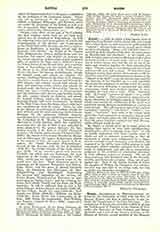

Rotuli, i.e. rolls, in which a long narrow strip of papyrus or parchment, written on one side, was wound like a blind about its staff, formed the earliest kind of “volume” (volumen from volvere, to roll up) of which we have knowledge. Many such rolls have been recovered in their primitive form from the excavations at Herculaneum and elsewhere. In the fourth and fifth centuries, however, these rolls began to give place to books bound as we know them now, i.e. a number of written leaves were laid flat one on top of the other and attached together by their corresponding edges. This was a gain in convenience, but for certain purposes rolls were still retained. To this latter class belonged certain legal records (from which is still derived the title of the judicial functionary known as the “Master of the Rolls”), also the manuscripts used for the chanting of the Exultet (q.v.), and especially the documents employed in sending round the names of the deceased belonging to monasteries and other associations which were banded together to pray mutually for each other’s dead. These “mortuary rolls” (in French “rouleaux des morts”) were called in Latin “rotuli”. They consisted of strips of parchment, sometimes of prodigious length, at the head of which was entered the notification of the death of a particular person deceased or sometimes of a group of such persons. The roll was then carried by a special messenger (“gerulus”, “rotularius”, “rollifer”, “tomiger”, “breviator”, were some of the various titles given him) from monastery to monastery, and at each an entry was made upon the roll attesting the fact that the notice had been received and that the requisite suffrages would be said.
By degrees a custom grew up in many places of making these entries in verse with complimentary amplifications often occupying many lines. It will be readily understood that these records, some of which are still in existence, preserving as they do specimens of ornate verse composition by a representative scholar of each monastery or institution, and engrossed on the roll by some skillful penman in each community, afford valuable materials both for the study of palaeography and also for a comparative judgment of the standard of scholarship prevalent in these different centers of learning. The use of these mortuary rolls flourished most in the eleventh, twelfth, and thirteenth centuries. Some are of prodigious size. That of the Abbess Matilda of Caen, the daughter of William the Conqueror, was seventy-two feet long and eight or ten inches wide, but this no doubt was altogether exceptional.
HERBERT THURSTON

